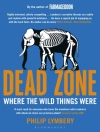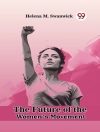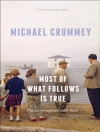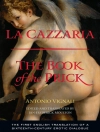Largely forgotten over the years, the seminal work of French poet, novelist and camp survivor Jean Cayrol has experienced a revival in the French-speaking world since his death in 2005. His concept of a concentrationary art—the need for an urgent and constant aesthetic resistance to the continuing effects of the concentrationary universe—proved to be a major influence for Hannah Arendt and other writers and theorists across a number of disciplines. Concentrationary Art presents the first translation into English of Jean Cayrol’s key essays on the subject, as well as the first book-length study of how we might situate and elaborate his concept of a Lazarean aesthetic in cultural theory, literature, cinema, music and contemporary art.
Зміст
List of Illustrations
Acknowledgements
Introduction: Lazarus and the Modern World
Max Silverman
PART I: LAZARUS AMONG US
Jean Cayrol
Lazarean Dreams
Lazarean Literature
PART II: SITUATING CAYROL’S LAZAREAN
Chapter 1. Lazarean Writing in Post-war France
Patrick ffrench
Chapter 2. The Perpetual Anxiety of Lazarus: The Gaze, the Tomb, and the Body in the Shroud
Griselda Pollock
PART III: READING WITH THE LAZAREAN
Chapter 3. Concentrationary Art and the Reading of Everyday Life: (In)human Spaces in Chantal Akerman’s Jeanne Dielman, 23, quai du Commerce, 1080 Bruxelles (1975)
Max Silverman
Chapter 4. Cinematic Work as Concentrationary Art in Laurent Cantet’s Ressources Humaines (1999)
Matthew John
Chapter 5. After Haunting: A Conceptualization of the Lazarean Image
Benjamin Hannavy Cousen
Chapter 6. Lazarean Sound: The Autonomy of the Auditory from Hanns Eisler (Nuit et Brouillard, 1955) to Susan Philipsz (Night and Fog, 2016)
Griselda Pollock
Concluding Remarks
Griselda Pollock
Index
Про автора
Max Silverman is Professor of Modern French Studies at the University of Leeds. He has written on cultural memory, representations of the Holocaust, and post-colonial theory and cultures. His publications include Palimpsestic Memory: The Holocaust and Colonialism in French and Francophone Fiction and Film (2013). He co-edited Concentrationary Cinema: Aesthetics as Political Resistance in Alain Resnais’s Night and Fog (2012).












